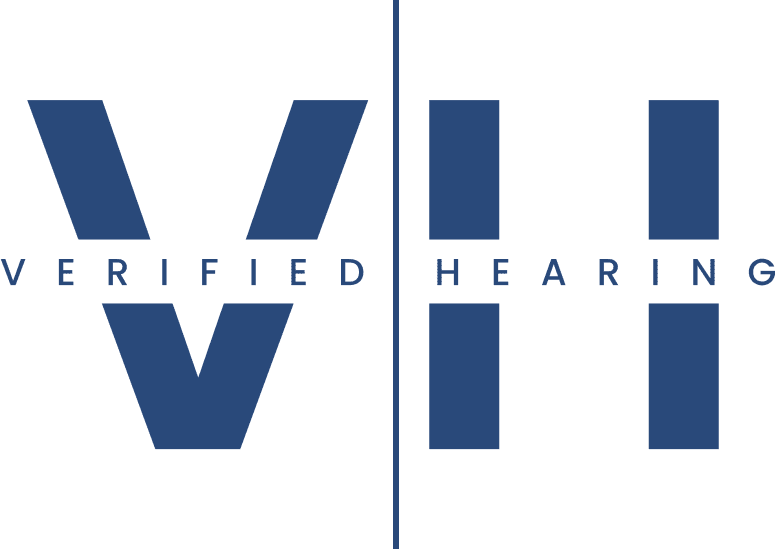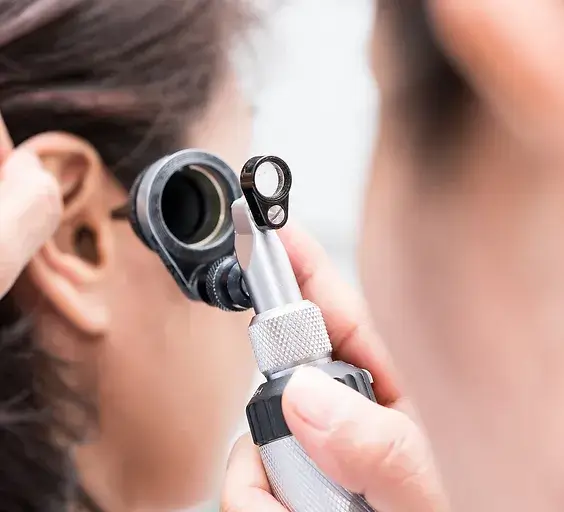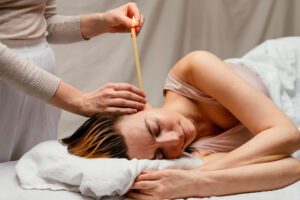Ear wax isn’t just gunk in our ears. It’s nature’s way of keeping them clean, fighting off dirt, and blocking infections. But sometimes, there can be too much of a good thing. An excess build-up can give our ears some trouble.
Now, why would there be too much wax? Several reasons! Our ear structure, age, use of hearing aids, earplugs, and habits like cotton bud usage play a part. People with conditions like psoriasis might also have more wax accumulation.
Signs You Might Need Help
Feeling ear pain, fullness or pressure in the ear, ringing, or dizziness? You might have excessive wax. If these symptoms sound familiar, it might be time for a professional ear check. You could visit your GP or book a free ear check with us.
We offer various treatments, but today, let’s delve deep into ear irrigation.
Ear Irrigation: What Is It?
Simply put, ear irrigation is like a mini shower for your ear. It uses a machine to gently squirt warm water into your ear to wash out any unwanted wax. The water is always at a safe and comfortable temperature.
The Process
Before Your Appointment:
Detailed Check:
Our clinicians review your ear history, considering all potential risks. If you've had prior ear surgeries or injuries, we might recommend an alternative treatment.
Prep with Drops:
Our clinicians review your ear history, considering all potential risks. If you've had prior ear surgeries or injuries, we might recommend an alternative treatment.
Sterilisation:
Your safety is paramount. All our tools undergo rigorous sterilisation.
Day of the Treatment:
- The clinician will double-check your ear.
- Once everything is set, the clinician will explain the process and make sure you're comfortable.
- The treatment starts. It's gentle, and while you might hear the sound of the machine and feel the warm water, it shouldn't be painful.
After the Treatment:
- Any leftover water in your ear will be carefully removed.
- Your ear will be checked once again to ensure all is well.
- Our clinician will share some tips and advice on how to take care of your ears.
Book an appointment for an ear check here

Where Can I Get It Done?
If you’re in London and wondering where to get ear irrigation done, our clinic is a great place to start. We have professionals who will ensure you get the best treatment.
Potential Risks/Side Effects
There are a few contraindications for ear irrigation method of ear wax removal.
Contraindications
Prior ear injuries:
If you have a prior injury in your ear canal, it is inadvisable to use ear irrigation for ear wax removal. The water will wet the injury and might worsen the situation.
Perforated ear drum:
If you have perforation(s) in your ear drum, this procedure should not be used on you. Also, if you have a weak eardrum, or recently healed of a perforated eardrum(as recently as 12 months), this procedure is considered inappropriate for you.
Ear Infection:
As a rule, if you have had middle ear infections in the last 6 months, irrespective of they have been treated, this method should not be used for you.
Prior Surgeries:
if you have had a surgery in the ear in the last 18 months, it will be dangerous to use this procedure on you.
Side Effects
The following are risks, side or after effects of ear wax removal using irrigation. It is important to note that these rarely happen:
Vertigo:
It is possible to feel dizzy as the water causes a ‘caloric’ effect. This is typically short lasting as the effect wanes in seconds.
Hearing loss:
Though this is rare, it is possible to suffer temporary or even permanent hearing loss from this process. Fresh tinnitus or worsening of an existing one could be experienced. This too is rare.
Trauma to eardrum:
It is possible to disturb or damage the eardrum by using this procedure, or even perforate it. This is unusual, but the possibility still exists.
Pain/bleeding:
The possibility exists of bleeding and pain. The bleeding should stop of its own accord due to clotting.
Home Remedies
It can be tempting sometimes to purchase ear irrigation kits and attempt to perform the procedure on yourself. We generally do not encourage unguided home remedies. Moreso, for a procedure with several contraindications and associated risks as have been noted here, it will be dangerous if you attempt anything less than a professional handling of the process. Ear irrigation at home therefore, is not safe.
However, home remedies such as application of ear drops is safe as long as it is guided by a professional.
Ear Syringing Vs Ear Irrigation
Many people ask: Is ear syringing the same as ear irrigation? The two procedures look alike since both are wet processes. They both use water to attempt to flush out disturbing ear wax and debris from the ear. Their modes of operation also look alike.
However, they are not the same. While ear syringing simply makes use of a manual syringe in its operation, ear irrigation makes use of an ear irrigation machine. The pressure of the irrigation machine can be calibrated to set values, which means that the pressure of squirt could easily be regulated. Ear syringing on the other hand provides no such luxuries. There is no regulation meter for the manual ear wax removal syringe.
Ear Irrigation Vs Ear Microsuction
Ear irrigation is a wet process as has been discussed here. It is a safe process if practised with considerations for its contraindications. Beyond infections, it also has a high tendency to cause other forms of damage to the ear. These are some of the after effects of ear irrigation (instruction: put a link in “after effects of ear irrigation” to jump to the side effect section).
Ear microsuction on the other hand is preferred to ear syringing and ear irrigation. Being a dry process, Microsuction ear wax removal is not as messy as ear irrigation, and poses less risk of infections. It avoids touching the sensitive skin of the ear canal and would have no contact with the eardrum. It is also very fast- faster than ear irrigation.
FAQs
As we have noted, ear irrigation can cause damage to your eardrum, or worsen already existing ear injuries. It can also cause ear infections. However, it is rare for this to happen.
If you underwent ear irrigation before flying, and the procedure went well without incident, you should be able to fly comfortably.
No, if you are not a professional, you may not know all the contraindications to look out for. Moreover, the procedure requires looking into the ear with a light source which will be impossible to do yourself. Ear irrigation at home is not safe.
Ear irrigation is not supposed to hurt, unless there are prior injuries the water sprays might disturb. But ear pain after ear irrigation is possible whether there were previous injuries or not.
For information on ear irrigation at the NHS centres, meet your GP for proper advice on this. Your GP will help direct you if the service is available in your area.
Absolutely! As long as it’s done by a professional who knows what they’re doing, ear irrigation is safe. They’ll always make sure the equipment is clean and that this treatment is right for you.
Book an appointment for a safe ear wax removal procedure

References
Ear irrigation guidelines, Dec. 1, 2016
Accessed: September 4, 2023
Ear irrigation guidelines/procedure, December, 2022.
https://eu.docworkspace.com/d/sIAWR8uvkAeGBn6kG
Accessed: September 4, 2023
Ear irrigation side effects/FAQs, September, 2022.
https://www.ncbi.nlm.nih.gov/books/NBK459335/
Accessed: September 4, 2023




